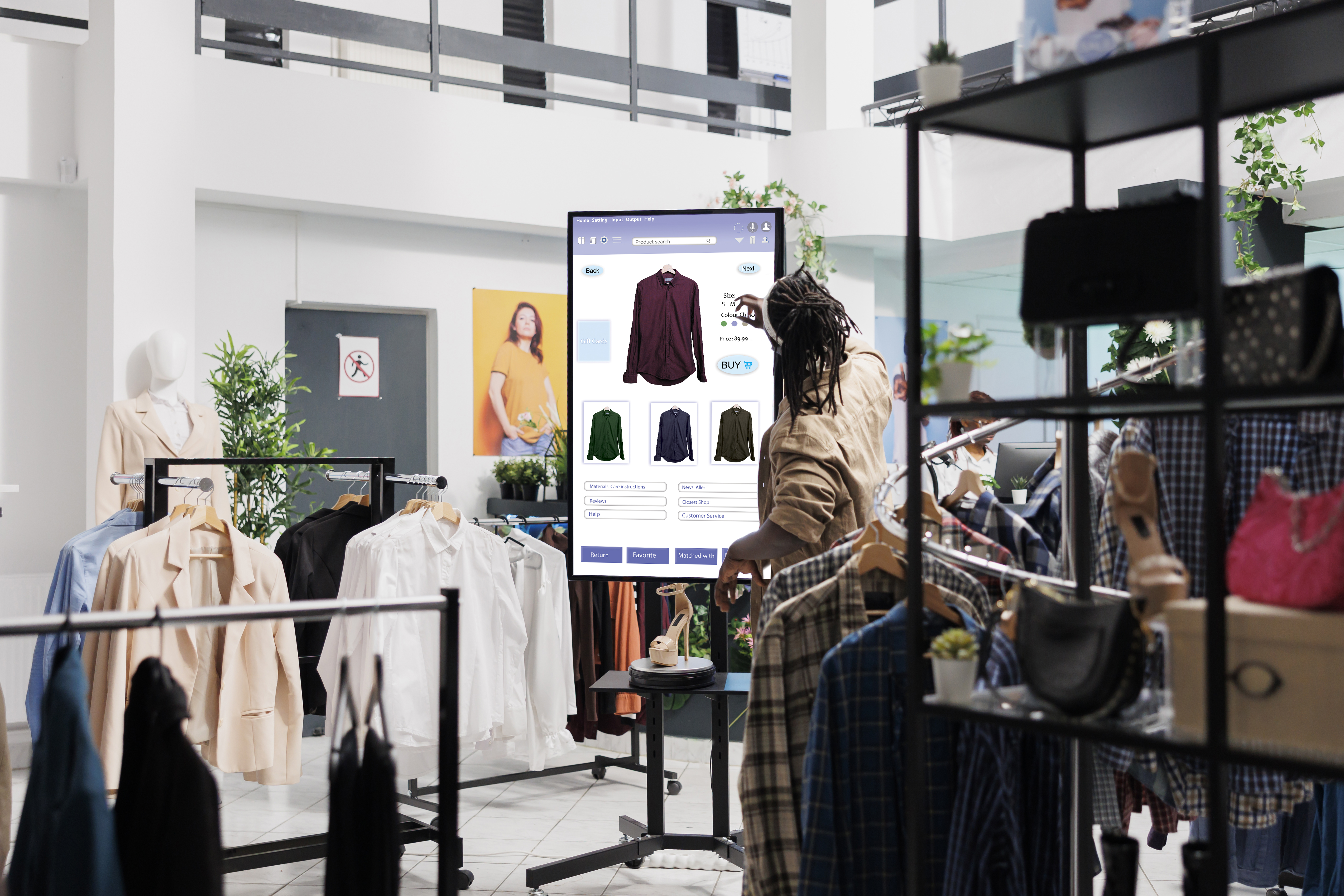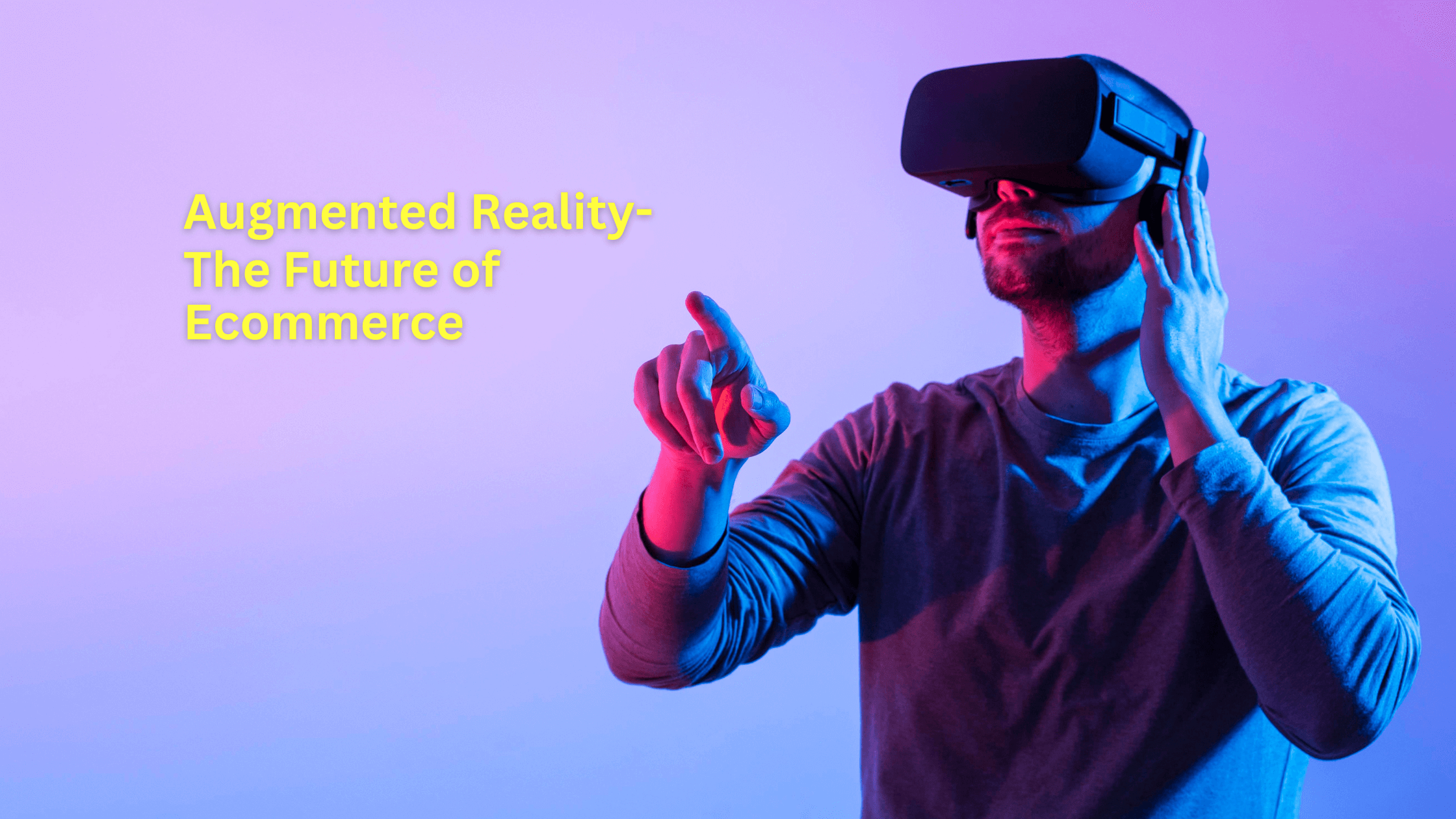Introduction
In the rapidly evolving realm of ecommerce, technology continually reshapes the way we shop, connect with products, and make purchasing decisions. One of the most groundbreaking innovations in this space is Augmented Reality (AR). With its ability to seamlessly blend the digital and physical worlds, AR in ecommerce is not just a trend but a game-changer with the potential to redefine online shopping experiences. In this comprehensive exploration, we delve into the multifaceted advantages of augmented reality and its profound impact on the landscape of online retail.
Understanding Augmented Reality (AR) and its Significance in Ecommerce
Augmented Reality is more than just a buzzword; it’s a technological marvel that enriches our perception of reality by layering digital elements onto our physical surroundings. In the context of ecommerce, AR empowers consumers to interact with products in an entirely new way. This technology bridges the gap between the convenience of online shopping and the tactile experiences of brick-and-mortar stores. By blending virtual and real elements, AR revolutionizes the way we shop, offering a dynamic and engaging way to explore products before making a purchase.
Exploring the Advantages of Augmented Reality in the Online Shopping Landscape
The integration of AR in ecommerce brings forth a plethora of advantages that elevate the shopping experience to new heights. Let’s dive into some of the most notable benefits:
1. Immersive Product Visualization: Redefining the Customer Experience
Augmented Reality enables customers to visualize products in their real-world context. Imagine virtually trying on a pair of sunglasses or placing a virtual couch in your living room to see how it complements your decor. This level of immersion transcends traditional static images, giving shoppers an unprecedented sense of engagement and connection with the products they’re interested in.
2. Bridging the Gap between Physical and Digital Shopping Environments
AR in ecommerce eliminates the disconnect between online and offline shopping experiences. Shoppers can virtually interact with products, simulating the tactile experience of physically examining an item. This not only fosters confidence in purchase decisions but also narrows the gap between the convenience of online shopping and the sensory engagement of traditional retail.
3. Personalization and Customization through AR-enhanced Product Interactions
Retailers can tailor AR experiences to individual customers, enhancing personalization. For instance, an online makeup store could offer AR try-on features that enable customers to see how different shades of lipstick look on their own skin. This personalized interaction empowers shoppers, making the shopping journey more interactive, enjoyable, and relevant.
Augmented Reality Examples in Online Shopping

AR’s transformative impact is vividly demonstrated through its real-world applications in various sectors of online shopping:
1. Virtual Try-Ons for Fashion and Accessories: Revolutionizing Apparel Ecommerce
Clothing retailers are leveraging AR to offer virtual fitting rooms, allowing customers to try on clothing and accessories virtually. This not only saves time but also mitigates sizing uncertainties, leading to more confident purchases and reduced returns.
2. Furniture and Home Decor: Visualizing Products in Your Living Space
AR empowers customers to visualize how furniture and decor items will look in their homes before making a purchase. This eliminates the guesswork and helps customers make informed decisions that align with their interior aesthetics.
3. Beauty and Cosmetics: Trying Before Buying in the Virtual Mirror
Beauty brands are employing AR to enable customers to virtually try on makeup products, helping them find the perfect shades and styles without physically applying them. This fosters an engaging and interactive makeup shopping experience.
4. Automotive and Gadgets: Interacting with 3D Models for Informed Purchases
In the automotive and gadgets sectors, AR allows customers to explore intricate details of products in 3D. Car manufacturers, for example, use AR to provide immersive tours of vehicles’ features, enhancing the pre-purchase research process.
Implementing AR in Your Ecommerce Strategy
As the advantages of AR in ecommerce become more apparent, businesses must consider a strategic approach to its implementation:
1. Choosing the Right AR Technology for Your Business
Selecting the appropriate AR technology requires understanding your target audience, product range, and technical capabilities. Depending on your goals, you might opt for marker-based AR, markerless AR, or web-based AR solutions.
2. Overcoming Challenges and Integrating AR Seamlessly
While AR brings exciting possibilities, it also presents challenges such as technical complexities, cost considerations, and potential user experience issues. Collaborating with experienced AR developers and investing in user testing are crucial steps in ensuring a seamless integration.
3. Enhancing User Engagement and Conversion Rates with AR-driven Content
Leverage AR not only as a tool for visualization but also as a means to engage and educate customers. Interactive AR-driven content, such as tutorials, demos, and interactive product showcases, can significantly enhance user engagement and drive higher conversion rates.
User-Centric Experience and Customer Engagement
AR isn’t just about enhancing product interactions; it’s also a powerful tool for nurturing customer relationships:
1. Fostering Deeper Connections with Shoppers through AR-powered Engagement
AR experiences create memorable moments that resonate with customers long after their initial interaction with your brand. These positive experiences foster deeper connections, enhancing brand loyalty and customer retention.
2. Building Trust and Reducing Purchase Uncertainty via AR Features
The ability to see and interact with products in a realistic context instills trust and reduces the hesitations that online shoppers often feel. This increased trust leads to higher conversion rates and decreased cart abandonment.
3. Utilizing AR to Enhance Customer Support and Post-Purchase Satisfaction
AR can extend beyond the pre-purchase phase to offer post-purchase support. Imagine a scenario where customers can access AR-based user manuals or troubleshooting guides for products they’ve bought, enhancing their satisfaction and reducing support requests.
Impact of AR on Ecommerce Metrics
The introduction of AR in ecommerce brings measurable improvements to various performance metrics:
1. Analyzing the Effect of Augmented Reality on Sales and Revenue
AR-powered shopping experiences often result in increased sales and revenue. A study by Shopify has reported that products with 3D or AR content have higher conversion rate upto 94% compared to products without such content.
2. Measuring User Interaction and Dwell Time with AR-Enabled Products
AR-rich experiences tend to keep users engaged for longer periods. Analytics tools can provide insights into how customers interact with AR elements, helping you refine your AR content for maximum engagement.
3. Case Studies: Real-world Examples of Increased Conversion Rates and Average Order Values
Several companies have reaped the rewards of integrating AR in their ecommerce strategies. For instance, Sephora’s Virtual Artist tool boosted conversion rates by 11.4%, demonstrating the potential for AR to drive substantial business growth.
Navigating the Challenges of AR Ecommerce
Embracing AR in ecommerce isn’t without its hurdles:
1. Technical Considerations: AR App Development and Integration Complexities
Developing AR applications requires expertise in various technologies, from 3D modeling to computer vision. Collaborating with professionals can help you navigate these complexities and deliver a seamless experience to your customers.
2. Data Privacy and Security Concerns in AR-powered Shopping Experiences
AR often involves capturing and processing personal data, raising privacy and security concerns. Adhering to stringent data protection regulations and communicating transparently with customers about data usage is imperative.
3. Balancing Innovation with Accessibility and Inclusivity
While AR offers innovation, it’s crucial to ensure that AR features are accessible to all users, including those with disabilities. This entails providing alternatives for users who might face challenges in interacting with AR elements.
AR Ecommerce Beyond the Screen
The future of AR in ecommerce extends beyond the confines of digital screens:
1. Exploring the Integration of AR with Wearable Devices for Shopping
AR’s integration with wearable devices opens up new avenues for shopping experiences. Imagine using AR glasses to receive product information, reviews, and prices as you walk through a physical store.
2. Augmented Reality in Physical Stores: Merging Online and In-Store Experiences
Physical retail stores are leveraging AR to enhance their in-store experiences. Interactive AR displays and AR-powered assistance can bridge the gap between online and offline shopping channels.
3. Social Commerce and AR: Creating Collaborative Shopping Environments
AR has the potential to revolutionize social commerce by allowing users to virtually try on products and solicit real-time feedback from their social networks. This collaborative shopping experience adds a new layer of engagement and interactivity.
Conclusion: Embrace the Future of AR Ecommerce
The ongoing revolution of Augmented Reality in ecommerce is reshaping the way we shop, connect with products, and engage with brands. From immersive product visualization to personalized experiences and enhanced brand engagement, the advantages of AR are undeniable. As businesses embrace this technological shift, they position themselves at the forefront of innovation, delivering unparalleled shopping experiences that captivate and resonate with customers.
The future of augmented reality in ecommerce holds endless possibilities. As technology advances, AR will likely continue to blur the lines between physical and digital shopping environments, transforming how we explore and interact with products. By harnessing the full potential of AR in ecommerce, businesses can usher in a new era of shopping that is dynamic, engaging, and deeply personalized.
Embrace change, unlock the potential of AR, and revolutionize the way you connect with customers in the exciting realm of ecommerce. As the boundaries between reality and virtuality fade, the journey of online shopping transforms into an immersive adventure where possibilities are limitless.

